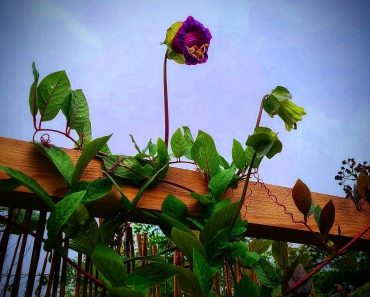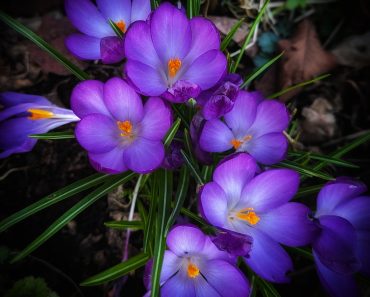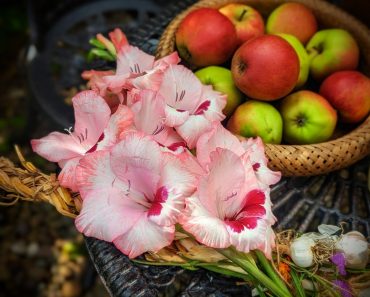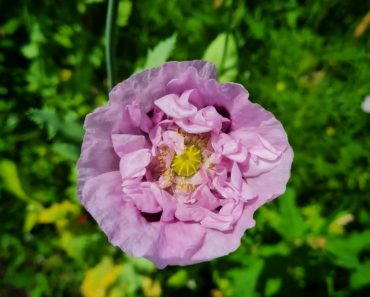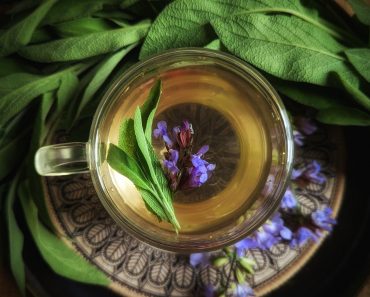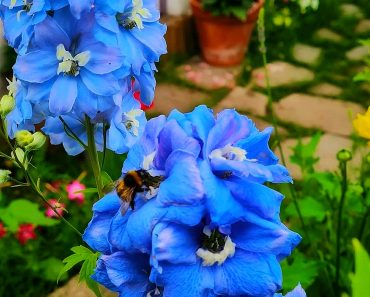Hellebores are classically beautiful plants. Showing their colours from Winter to late Spring. This Hardy herbaceous perennial is mainly evergreen, has a long flowering period and thrives even in the shade! Here’s How I grow and care for mine…
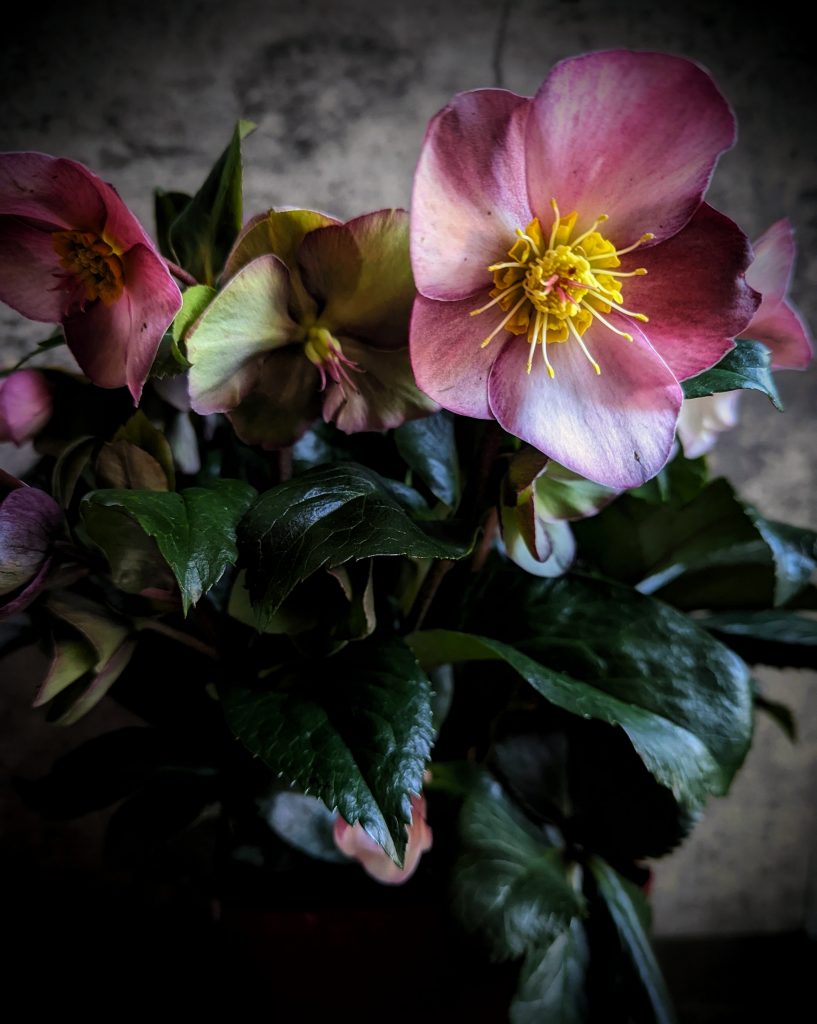
The lady of the Winter Garden!
If plants had personalities, and were sorted into a particular social class, wholly dependent on their appearance. Then Hellebores, or Lady Hellebore, as I like to call mine, would be way up in the class hierarchy.
Also known as winter rose, Christmas rose, and Lenten rose, Hellebores are Refined, elegant and unique. These nodding blooms are almost too fancy for my small Victorian terrace garden!
In short, Hellebores are a classy plant! Guaranteed to elevate any garden to a whole other level ! Whether your garden is urban or Rural, small or large, there is a Hellebore out there to suit your needs. So lets find out a little more about this posh plant…
Hellebore Characteristics
Lets first start with the leaves. Oh how I love the leaves of the Hellebore plant! Dark green and glossy with a leathery feel. Come Winter the leaves clump together and cradle the exquisite winter/spring flowers. Providing a wonderful contrast to the delicate hues of the newly emerging flowers.
The flowers are usually various shades of green, pink, ruby or plum. But can also be White or almost black. They have 5 showy Sepals with central tubular petals and many stamens.
Hellebore plants can grow from around 9 to 18 inches tall and achieve a spread of 12 to 24 inches wide.
7 Interesting Hellebore Facts
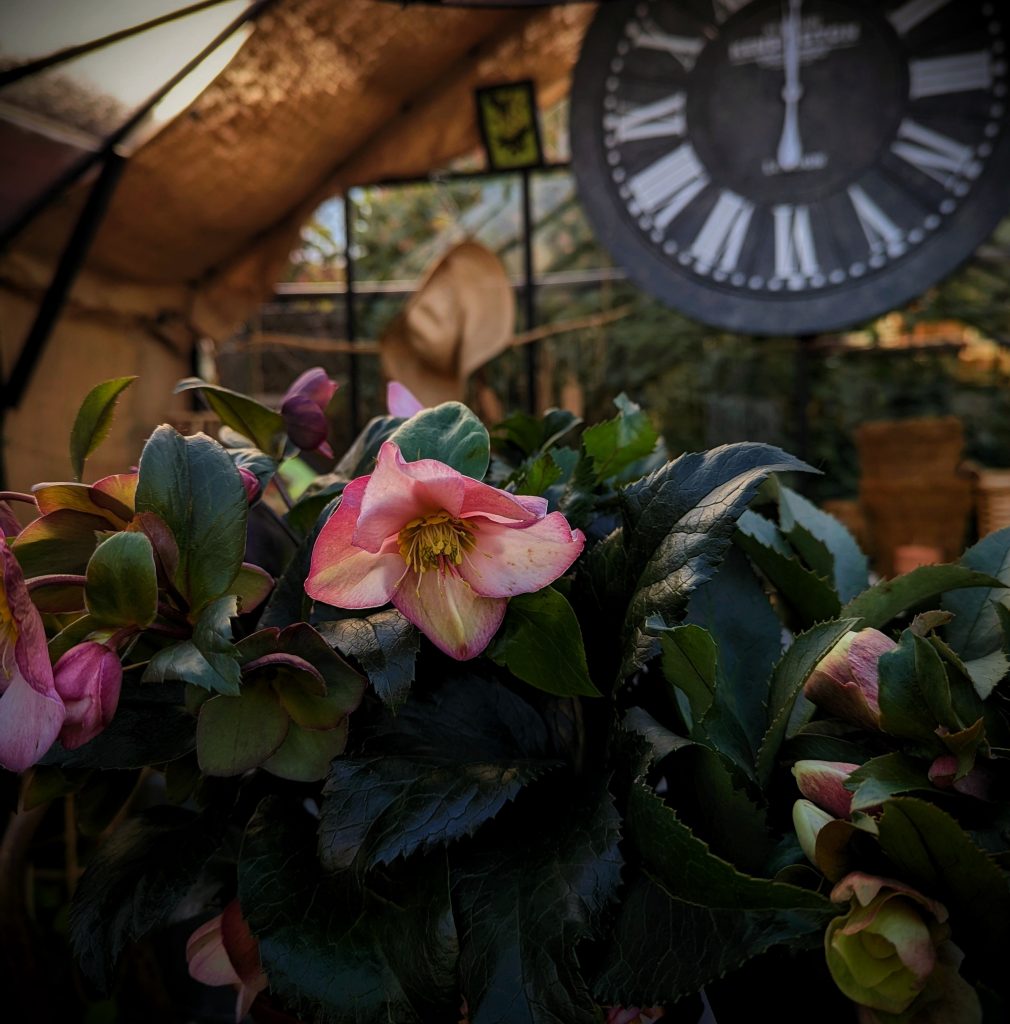
- What appears to be the coloured “petals,” of the Hellebore, are not actually petals but Sepals. Sepals are basically the outer parts of the flower that enclose the developing bud within.
- Hellebores, in the right conditions can have an impressively long bloom season of up to three months!
- They will not sulk! Hellebores dont mind being moved or transplanted. If you’re unhappy with where you originally planted your Hellebore, simply lift the clump from the ground and replant
- Wildlife will avoid them. Hellebores contain toxic chemicals which makes them unappealing to deer and other wildlife.
- A Hellebore flower will never look you in the eye! The flowers of the Hellebore, much like fuchsias face downwards…for good reason! This downward nod protects the pollen from winter rains.
- While they are often called Winter Roses or Christmas Roses, they are actually not a member of the rose family. They are members of the Ranunculaceae family (the Buttercup family). Other notable members of the family are Clematis, Delphinium, and Ranunculus.
- Hellebores are also known as The Lenten Rose, due to their habit of blooming during Lent.
How To Grow Hellebores
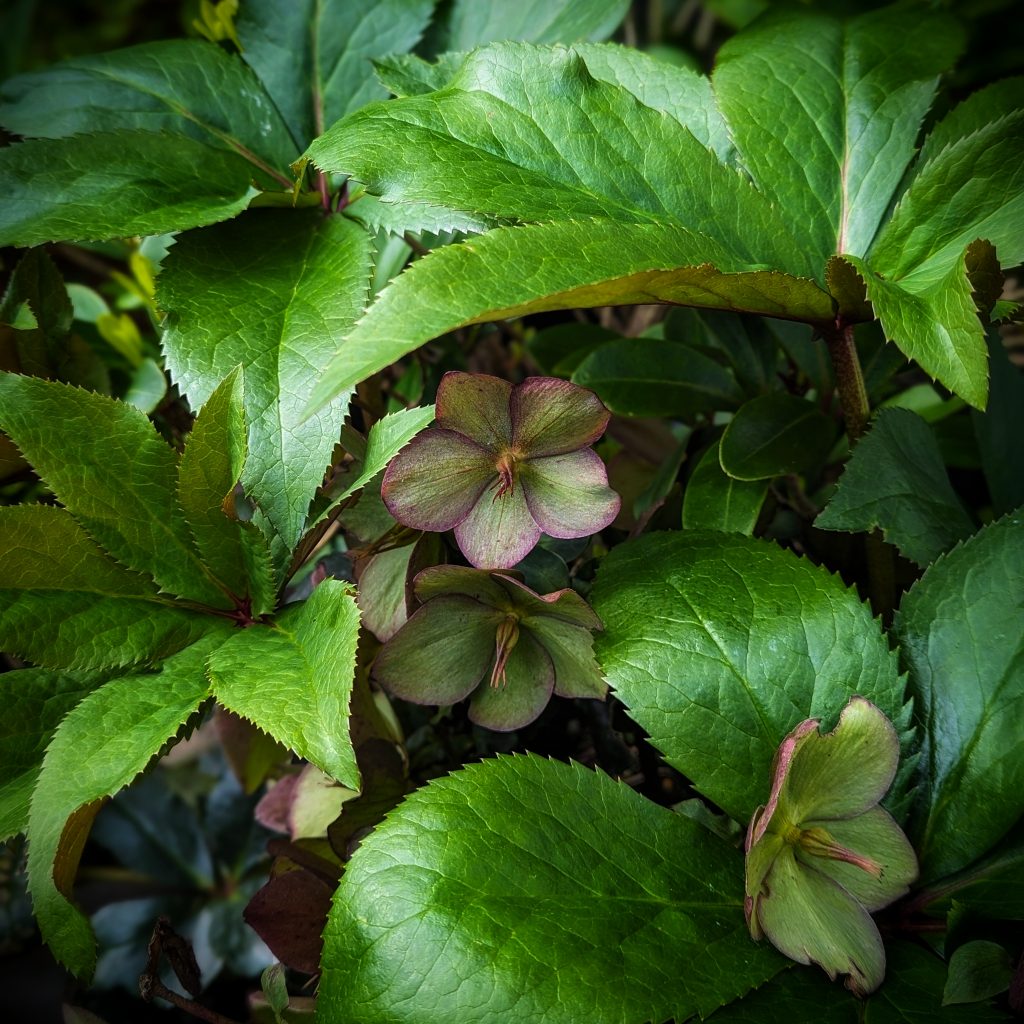
where to grow hellebores
- Grow Hellebores in Full or partial shade, in the shade of Shrubs or trees or in the middle of a border.
- Hellebores love a shady spot! Because of this, they are mainly suited to a woodland type environment. I live on a tree lined avenue, so my front garden is partly shaded for most of the day, my Hellebores are more than happy under the dappled shade of the trees.
- Be sure to provide your Hellebores with a moist and well drained Soil
when to plant hellebores
Plant Hellebores from Autumn -Spring (October-April). This gives the plants time to establish before the dryer weather arrives.
how to plant hellebores
- New Hellebore plants tend to be supplied in pots, in flower or in leaf. Be sure to give them a good soaking before you attempt to plant them out.
- Make a hole slightly larger than the pot. Place the Hellebore in the hole and back fill with soil, you could also add a layer of mulch at this point.
- Water and let the plant do the rest :o)
Can You grow Hellebores from Seed?
Absolutely! But bear in mind, you will need a lot of patience! From Germination to flowering can take 2 years ! But so worth the wait!
Buy Helleborus Cottage Mixed Perennial Flower Seeds
How To Sow Hellebore seeds
- Hellebore seeds are best sown when they are fresh. Either soon after harvesting the seed yourself, or when bought from a reputable seller. Sow seeds IMMEDIATELY, when you receive them, WHENEVER THIS MAY BE! They need several months in damp compost in order to germinate.
- Sow your seeds in a good quality compost in small seed trays or pots. Scatter the seeds on top of the compost and then cover with a layer of grit or perlite.
- Leave the pots outside, you may want to cover with some kind of netting to prevent wildlife getting to the seeds .
- Try to keep the compost from drying out
- Hellebore seeds can take a long time to germinate. They need to be exposed to both a period of heat and then cold. As soon as germination occurs remove any protective netting
- Once seedlings are large enough to handle, prick out and pot on. Leave the pots in a sheltered spot to grow on, don’t worry, you don’t have to keep them frost free.
- Once the young plants have developed a good root system, plant them out the following Spring in a partly shaded spot
- ** Remember, you may not see flowers for 2-3 years after sowing
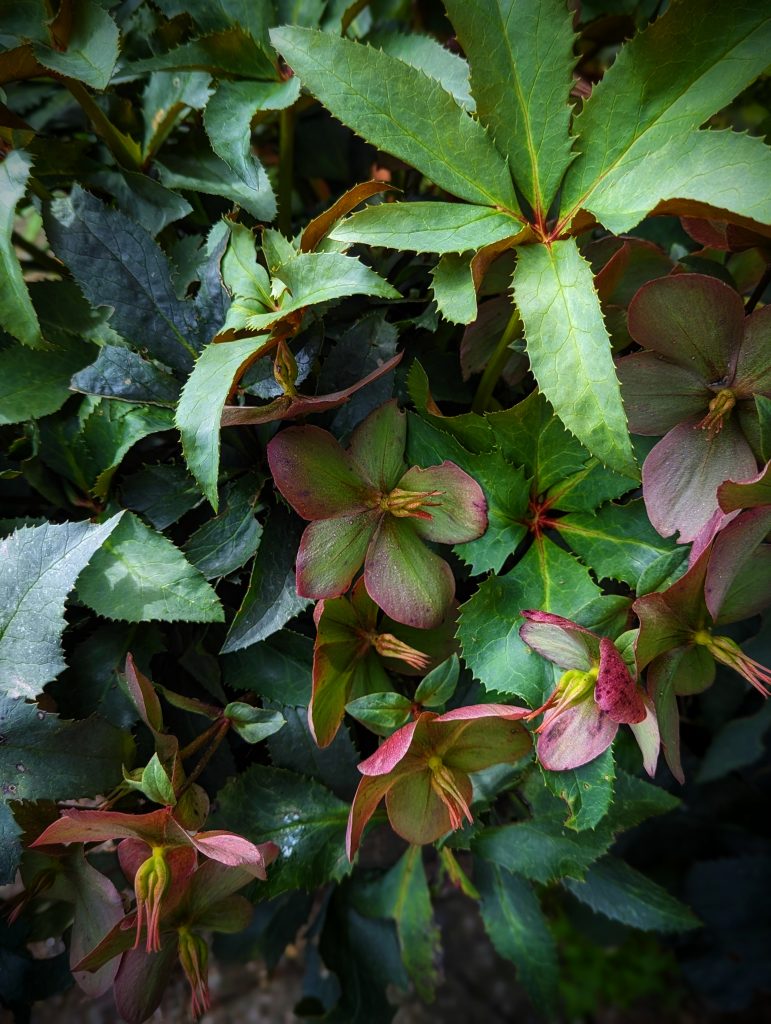
Will hellebores spread?
Yes. Hellebores are deep rooted and they will eventually spread. There is always the option to divide Hellebores once the spring bloom is over. Simply dig up the established clump (root ball), split with a spade and replant.
This is also a good way to double your Hellebore stock and propogate new plants, without sowing seeds or buying a new specimen.
Do hellebores grow fast?
Not Really! Hellebores are considered to be a slow-growing plant. Young Pot Bought Hellebores can take 18 months to reach maturity. While seed grown Hellebores can take up to 3 years to reach the same point. A hellebores eventual size is about 12 inches tall by 24 inches wide.
Do hellebores do well in pots?
Mine do! I have some in the ground and in pots, both are thriving! Ideally provide a container that is at least 12-18 inches deep and wide. Remember, Hellebores have a deep root system so give them ample space.
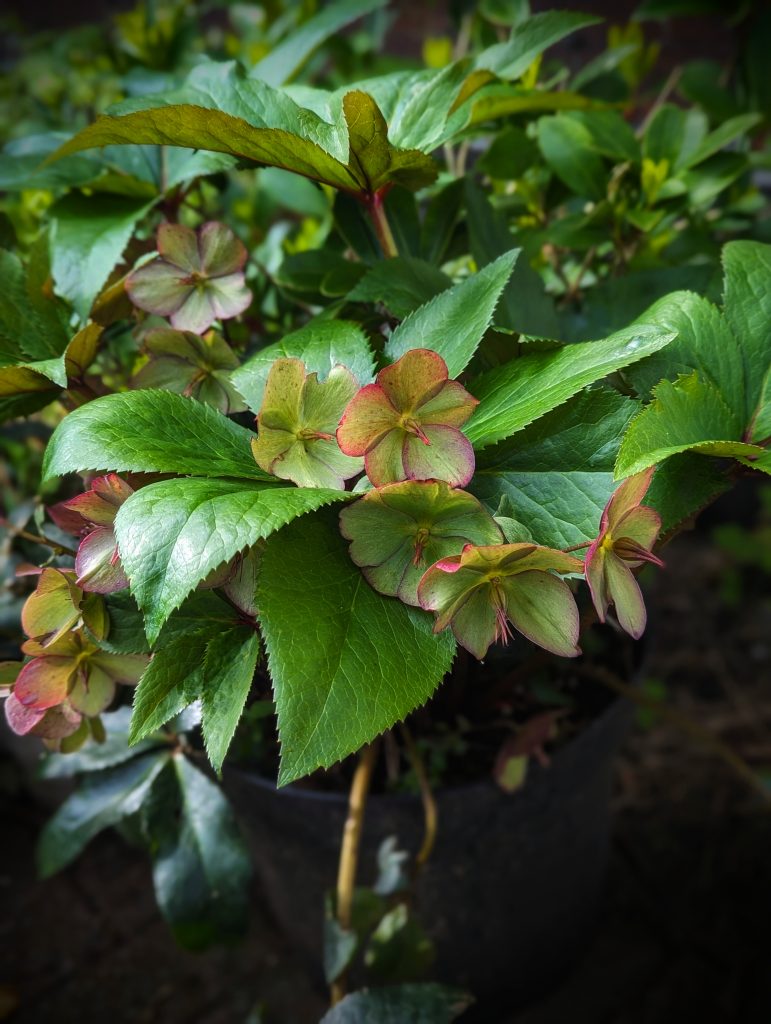
Should you deadhead hellebores?
Should hellebores be deadheaded? If the spent flowers are looking a little shabby, simply pinch off the flower at the top of the stem.
Should you cut hellebores back?
Hellebores can become unsightly and a little raggedy, as they shed their old leaves for new ones. The ideal time for pruning Hellebores is as soon as new growth begins to appear in late winter. (Around late December or early January)
Cut back the old leaves by trimming them directly at the base of the plant. Trace the stalk and leaf back to ground level, and cut it off leaving about 5cm to spare, to prevent the occurance of rotting.
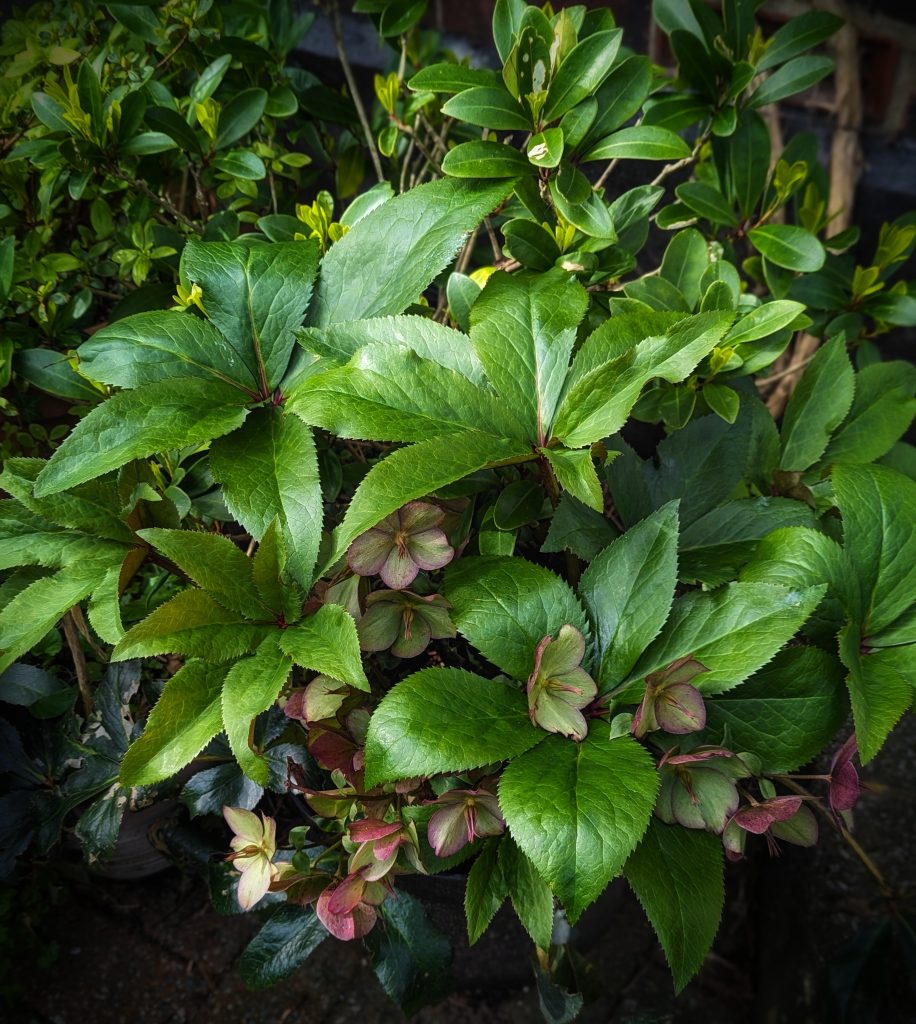
Are hellebores poisonous to dogs?
Yes! While a mature dog, will likely know better than to eat the unpleasant tasting Hellebores. A young puppy may eat without tasting. Hellebores contain chemicals that are toxic to not only animals but humans too. Ingestion can cause vomiting, diarrhoea, lethargy and serious heart-related side effects. So please be mindful.
CREATING A GARDEN? CHECK OUT THESE POSTS…
- How To Grow Lobelia
- How To Grow Liatris Spicata
- How To Grow Cerinthe
- How To Grow Cirsium Rivulare
- How To Grow Delphiniums
- How to Grow Dahlias
- How To Grow Sweet Pea
- How To Grow Snapdragons
- How To Grow Cosmos
- How To Grow Verbena
- How To Grow Erica Carnea
TAKE A LOOK AT THESE FRUGAL GARDEN DIY POSTS…
- DIY Potting Shelter
- DIY Potting Shed Made From Doors!
- Free Greenhouse Makeover!
- 10 ways to create a vertical Garden
- DIY Potting Bench From Scrap Materials
- How to Build a Bee hotel from Pallet wood
- How To Make A Rustic Fence with Tree Branches
- DIY Free Crazy paving Path
- How To make a garden arch with tree branches
LOOKING FOR MORE ‘HOMELY’ INSPO ?
Have a Nosey Around the Blog! See what i’ve been Decorating, Baking, Growing and Brewing! Also, pop over and say Hi on Instagram

